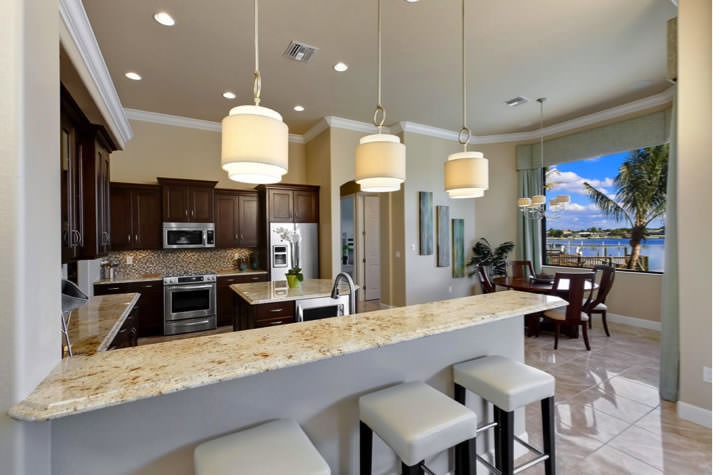Home and Decor
6 min read
How Do You Choose the Right Lighting for Each Room?
October 08 , 2025
By Sharib

Lighting serves many functions in a home. It creates a perception of a room's size and shape, affects the room's climate, and determines its utility. Proper lighting can enhance the comfort and usability of a room, inviting people to linger, while poor lighting can create a dull and uninviting atmosphere. Selecting appropriate lighting for a room can be challenging, and is not a matter of applying a single, simple principle. It requires an analysis of the room's functions, the desired emotional climate, and the interplay of various natural and artificial sources of light with the design plan.
1. Role of Lighting in Home Design
Lighting serves many functions beyond merely providing visibility. It can dictate a room's atmosphere and comfort, as well as manipulate the use of design elements. Effective lighting can establish a desired interplay of light and shadow, unify separate design elements, and control the flow of a room. Living rooms, for example, should have soft, ambient light that promotes relaxation, while kitchens should have bright light, which is essential for safety and usability, especially during food preparation.
2. Triad of Varieties of Illumination
Each of a spatial arrangement's constituent components must function in harmony with one another whilst interlacing different schemes of illumination designed to establish the balance and function of a space. The use of a single light fitting or fixture is ill-advised, and designers encourage the division of illumination into its constituent stages: Ambient, Task, and Accent, to achieve a holistic therapeutic effect as light fills a space and envelops it.
3. Ambient Lighting
The basic layer of any room's lighting is ambient lighting. It creates a general room brightness, allowing people to move about sufficiently and with ease. The primary fixtures for ambient lighting include ceiling-mounted fixtures and chandeliers, recessed lighting, and wall sconces. The aim of ambient lighting is not to illuminate any particulars but rather to provide an even wash of light to the whole room. The warm or cool lighting selected for the room can significantly impact the ambient lighting and, consequently, the overall ambiance of the room.
4. Task Lighting
Task lighting is direct and concentrated. It helps with daily activities such as reading, cooking, studying, or working on a hobby. Practical examples include desk lamps, under-cabinet kitchen lights, and bathroom mirror lights. Task lighting enables you to focus on specific activities by alleviating eye strain and minimizing shadows. It is designed to be used in conjunction with ambient lighting. The rest of the room should not be overpowered. A common provision in homes is dimmable task lights, as they offer the flexibility of adjusting brightness to suit different activities.
5. Accent Lighting
Accent lighting adds depth and character to the interior space. Unlike ambient and task lighting, accent lighting is primarily decorative in nature. Accent lights highlight specific features, such as paintings, textured walls, greenery, or bookshelves, to draw attention to these elements. Picture lights, spotlights, and LED strips are commonly used for this function. Accent lighting can create and transform the mood of a room. Although it may not be necessary, it improves the ambiance and reflects individual taste.
6. Choosing Lighting for the Living Room
Living rooms can serve multiple functions. People can relax or hold social gatherings for family and friends. Begin with ambient lighting, such as a central ceiling fixture, and layer it with recessed lighting. For the evenings, add table and floor lamps to create soft light and intimate surroundings. Use accent lighting to add interest without flatness, such as wall washers or spotlights directed to artwork. Living rooms can benefit from the use of dimmers, as they allow for the management of light to suit various activities, and the varying levels of brightness can create and change moods as needed.
7. Creating the Right Atmosphere in the Bedroom
The bedroom, unlike the rest of the house, should provide comfort and a calming state. This is the essence of rest. When a bedroom is well-composed and organized, the lighting plays a significant role. Overhead lighting should not be piercing, but rather soft, with bedside lamps positioned on the side of the bed. This is required for reading. Bedrooms are ideally suited for warm color temperatures as they imitate the glow of a setting sun. For elegance, pendant lights or wall-mounted sconces positioned on either side of the bed will free up space on the nightstand while providing focused light. Dimmable lights are beneficial for bedrooms because they can be adjusted and muted at night.
8. Task-Oriented Kitchen Lighting
The kitchen is a workspace that requires bright and focused lighting. While ambient lighting from recessed fixtures and central ceiling lights provides the base layer, the primary focus of illumination is task lighting. Under-cabinet lights simplify the countertops and reduce shadows when cutting vegetables and preparing meals. While pendant lights over an island or dining bar may improve visibility, they can also be used to enhance the decor. For a harmonious kitchen, consider using a blend of warm and cool lighting. While cool white lights strengthen the ease of food preparation, warmer lights over dining areas create a more inviting environment.
9. Functional and Safe Lighting in the Bathroom
Bathrooms must strike a balance between personal and practical functions. For activities such as shaving and applying makeup, bright shadow-free task lighting around the mirror is essential. A wall-mounted fixture on either side of the mirror is preferable to a single overhead light because it reduces shadows on the face. Ceiling fixtures provide general ambient lighting, which is essential for safety, visibility, and the overall function of the room. For added relaxation, consider spa-like lighting. Dimmable ambient accent fixtures offer soft, ambient lighting, perfect for placement near the bathtub and shower, creating a relaxing and unwinding atmosphere.
10. Dining Room Lighting for Comfort and Style
Dining rooms facilitate social interactions and gatherings among people. A chandelier is often the focal point, and the soft, warm light it provides encourages people to linger vis-à-vis the table. These lights are relaxing and create balance with the room's function, aiding in the task of eating. The light fixture should be proportionate to the table to maintain balance in the space. For somber, festive times, the space can be accented with sconces and uplighting to provide a sense of depth and layering that celebrates the occasion.
There must be consideration of the function, the intended mood, and the visual design for the separate rooms in a house to arrive at the most appropriate lighting. The right balance in lighting will provide a pleasant impression and ultimately aid in all the various tasks required by daily household activities. The judicious use of a combination of ambient, task, and accent lighting for each particular room will provide an adaptable atmosphere and improve the room's overall character.
live smarter
Shop smarter, live better, and stay ahead of the trends with our reliable recommendations!
trending
Home and Decor
6 min read
How Can You Decorate with Plants Without Overdoing It?
Home and Decor
6 min read
How Do You Mix Vintage and Modern Decor Like a Pro?
Home and Decor
5 min read
How to Use Home Fragrance as a Decor Element?
Home and Decor
5 min read
How to Use Throws, Cushions & Rugs to Define Your Decor
Home and Decor
7 min read






